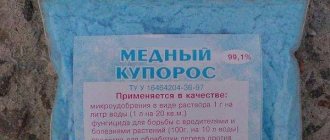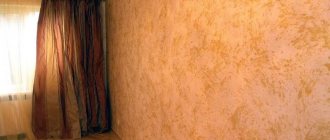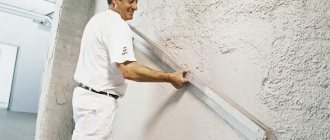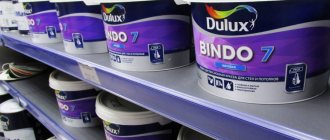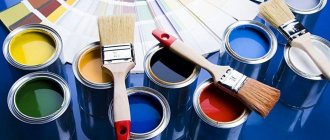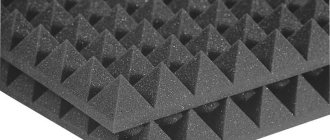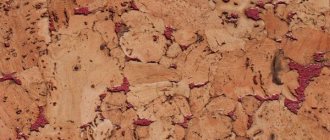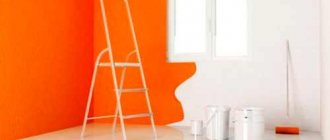It is not known who was the first to try using copper sulfate against mold - but the experience was so successful that even now, when store shelves are bursting with the latest super remedies, we still return to this substance. It is inexpensive and can be used universally. Vitriol has found application in the fight against household fungi and the disinfection of building materials, the destruction of garden pests, and even the disinfection of water bodies from algae blooms. But city residents most often use copper sulfate solution to destroy mold on the walls of their apartments.
What is copper sulfate
An inorganic substance with the formula CuSO4 5H2O is a crystalline hydrate, that is, it has a certain number of water molecules in its crystal lattice. In our case, one salt molecule combines with five water molecules. The chemical product is found in the form of a turquoise powder or transparent bright blue crystals (it contains 24% copper).
Cuprum sulfate is characterized by:
- increased hygroscopicity;
- good solubility in water;
- absence of any odor.
The widespread use of the compound in the fight against fungal colonies on walls is due to its effectiveness, practicality, and ease of use. Using the substance, you can eliminate mold in a building made of any material.
Why do people often choose copper sulfate?
Copper sulfate is often used against mold in the house, apartment, basement and greenhouse, as this affordable product is easy to use and highly effective. This drug has fungicidal antiseptic properties and inhibits the development of pathogenic microflora.
Copper sulfate is used against mold in the form of an aqueous solution of a certain concentration. After applying the drug, the growth of mycelium stops not only on the surface, but since the vitriol penetrates deep into the material, reliable protection of the latter is ensured.
Copper sulfate
Copper sulfate can be applied to wood, concrete, brick, and stone. It is also recommended for use to eliminate mold on drywall and gypsum fiber. At the same time, it is unacceptable to apply copper sulfate to metal surfaces, as this causes a chemical reaction.
Which vitriol is suitable for fighting mold
We can easily find suitable copper salt in construction or hardware stores, specialized gardening outlets, and at the market.
In appearance it resembles table salt. The shades are affected by impurities (zinc, nickel, iron). The size of the grains depends on the grind size.
If you are in doubt about what substance you purchased, thoroughly mix a teaspoon of grains with 1 cup of warm water. Dip the nail into the mixture for 5-7 minutes. Got a red coating? We have copper sulfate powder, suitable for treating walls with mold formations.
The substance has a fairly affordable price. So, for a package weighing 100 g we will pay 45-65 rubles, 300 g - 120-145 rubles, 1 kg - 200-210 rubles.
Why does mold occur?
In outbuildings, a private house, or an apartment, a greenish or grayish-black coating of microscopic fungi often appears. This is mold. Before you go for copper sulfate for mold on the walls, it is important to understand the reasons for the appearance of accumulations of mushrooms and eliminate them.
Unsightly and hazardous to health “mats” of mushrooms can form due to:
- improper operation of the ventilation system;
- damage to insulating seams;
- cracks in load-bearing walls;
- poor condition of the sewer system;
- dampness in the underground.
Copper sulfate can also be useful against mold if the gutters are leaking, the room is heated unevenly, or the outer walls freeze in cold weather.
Perhaps “rusty” stains are present on the walls due to humidity caused by frequent washing, the presence of a large number of indoor plants or pets.
Using copper sulfate against fungus on walls
When fighting fungus and mold, it is not necessary to use expensive special products, which are now quite plentiful in stores or on the market.
The disadvantage of using such products is toxicity, so after treatment the room needs to be ventilated for a long time, and it is better not to touch the treated surface, but this is difficult if there are children or pets in the house. If the area of the infected surface is not too large, then simpler, but no less reliable methods can be used to combat the fungus. One of the cheapest and simplest remedies is a solution of copper sulfate.
This drug can be used not only in an apartment or private house, but also in utility rooms - garages, sheds, attics.
Below we will talk about how to dilute copper sulfate, treat different surfaces with this product, and much more.
What you need when working with vitriol against mold on walls
We will prepare the disinfectant solution in a ceramic container. Metal containers are not suitable for such purposes.
For work on an area of up to 10 square meters. we prepare:
- 100 g of powdered prepared vitriol against mold;
- 10 liters of clean warm water;
- 30-50 ml of 9% table vinegar (strengthens the effect).
At a standard concentration, the ratio is 1:100, i.e. 100 g of substance per 10 liters of liquid. If we are treating a heavily affected area, we can prepare a stronger composition - 3:100 (300 g per 10 liters of liquid).
To apply the product, we arm ourselves with a sprayer (paint brush, sponge), and to clean the wall with a stiff brush (sanding paper).
The result will be enhanced if, before treating the walls with copper sulfate, wash them with soapy water (40 g of soap shavings per liter of water) and allow to dry.
The use of copper sulfate against fungus and mold: effectiveness
Copper sulfate has long been used against pests and many pathogens in the garden. It is also effective in combating most fungi, including those that can appear on the walls of residential and non-residential premises.
The effectiveness of using such a solution has been tested for years - after the treatment procedure, the fungus disappears for a long time, only the solution of copper sulfate should be prepared in the appropriate concentration.
Important. Too low a concentration of copper sulfate may not give a positive result, so the main thing when fighting mold is to prepare the solution correctly.
Preliminary surface preparation
We begin work by preparing the walls for spraying with copper sulfate against mold.
Table 1. Preparatory process
| Process | Description |
| Removing Coatings | We tear off the wallpaper using any convenient mechanical method. Scrape off the paint with a spatula. |
| Cleaning plaster | Remove the plaster using a spatula. We clean the surface with sandpaper to get rid of the smallest “nests” of fungus. |
| Washing with soapy water (for black mold) | Wash surfaces with soap and water and let dry. |
Precautionary measures
Copper sulfate is toxic and should be handled very carefully:
- Prepare the antifungal mixture immediately before use and use within 10 hours.
- Prepare the mixture and store it not in a metal container. Copper corrodes iron and other metals.
- Toxic fumes of copper sulfate cause poisoning and vomiting, use with caution. Follow safety precautions, wear a respirator or mask on your face. Do not allow the powder to become dusty during work; after finishing the treatment, you must wash your face.
- The powder itself is harmless to dry skin, but it must be washed off. Wear rubber gloves and closed clothing.
- While treating the room with an antibacterial composition, turn on the hood or open the window.
- If you are poisoned by copper salt vapors, consult a doctor immediately.
How to dilute pentahydrate, how to store the solution
If possible, we provide ventilation - open windows, turn on hoods.
Let's figure out how to properly dilute copper sulfate. Dissolve the substance (100 g) in water (10 l) and stir with a piece of wood at hand. To speed up the process, it is better to dilute in warm liquid.
Experts advise first dissolving all the prepared copper sulfate powder for mold in 3-4 liters, and then adding liquid to the required volume.
To enhance the effect, add vinegar (about 40 ml) or 2-4 drops of grapefruit seed or tea tree oil.
If the solution turned out to be more than the required amount, then store it in a tightly sealed glass or ceramic container.
At room temperature - no more than 3 months, in a cool place - up to 1 year.
What is needed to remove mold using vitriol?
To prepare and apply the solution, we will need:
- Copper sulfate - 100 grams.
- Warm water - 10 liters. The container is ceramic or metal with an enameled surface.
- Vinegar - 200 ml (not necessary, but will enhance the effect).
If you need to treat a large area, then the water-vitriol ratio should remain approximately the same - 100 to 1. That is, for 20 liters of water you need 200 grams of vitriol, for 50 liters of water - 500 grams.
Copper sulfate packaging
Additionally you will need:
- Sponge, or brush, or spray bottle - for application.
- Spatula, metal brush (for cleaning the surface).
- Antiseptic soap.
- Sandpaper.
Means of protection:
- Latex gloves.
- Respirator.
- Glasses.
- Clothing must cover the entire body.
How to dilute vitriol against mold?
Now let's talk about how to dilute the solution.
Dissolve 100 g of vitriol in 10 liters of warm (approximately +40º) water. The solution can be stirred with any available piece of wood. The water temperature may be lower, but in warm water the vitriol will dissolve faster.
For convenience, you can dilute the product in 4-5 liters of water, and after dissolving it, add liquid to the full volume.
To enhance the effect, you can dilute the following in the solution:
- Vinegar (9%): 25-40 ml per 10 liters of water and 100 grams of vitriol.
- A few drops of tea tree oil.
- Any product containing chlorine.
Aqueous solution of copper sulfate
The prepared vitriol solution can be stored for up to 3 months (at room temperature), or up to 1 year if stored in a cool place. For storage, use tightly sealed ceramic or glass containers. You cannot store the solution in a metal container.
Surface preparation and work
Before using vitriol, you need to prepare the surface:
- If possible, ventilation of the room is ensured (windows are opened, hoods are turned on).
- On walls affected by mold, the decorative coating is removed. Removal of the coating is carried out depending on its type (wallpaper is torn off, plaster or paint is scraped off with a spatula).
- If spores penetrate deeply, the surface must be cleaned with sandpaper.
- Before using vitriol, it is recommended to wash the areas affected by the fungus with a soapy solution and then let them dry. This is especially useful if black mold has grown on the wall.
- Wear protective equipment.
- Prepare a solution of vitriol (how to dilute it is described in the paragraph above).
- Using a sponge (or brush, or spray bottle), apply the solution to the wall.
- Allow the surface to dry. Depending on the level of humidity in the room and the area of the treated area, this can take from 2-3 to 10-12 hours (on average - 4-5).
- If there was a lot of rot, or mold was on the wall for a long time, it is recommended to repeat the treatment 3-5 times.
- After the surface has completely dried, you can begin finishing.
Please note: it is possible to remove mold with this solution. However, if the cause of the rot is not eliminated, it is possible that after some time it will appear again, and repeated removal will be required.
Is vitriol dangerous, and what are the symptoms of poisoning?
First, about the dangers of copper sulfate (both in the form of granules and in the form of a ready-made aqueous solution):
- In case of contact with skin, there is no danger, but hygienic treatment is required (wash the solution with soap and water).
- Contact of the solution with the eyes may cause a burn. In this case, you should immediately rinse your eyes with plenty of water.
- Dosage that can lead to poisoning: 0.5 grams of powder in dry form and 11 mg/kg when inhaled.
- The lethal dosage is 45-125 grams (if swallowed dry). The exact figure depends on body weight, health status and age.
Stages of work
Symptoms of poisoning:
- nausea and vomiting;
- pain in the stomach;
- increased heart rate;
- general deterioration of health, weakness;
- allergic reaction;
- skin rashes, itching.
If these symptoms are felt when working with vitriol, you must:
- stop working immediately;
- if the work was carried out indoors and symptoms appeared due to inhalation of the substance, leave the room and ventilate it;
- seek medical help.
Copper sulfate poisoning is a rare occurrence. It is possible with:
- accidental or intentional ingestion (dry product or solution);
- prolonged stay without a respirator in an unventilated area in which the solution is used.
Precautionary measures
When preparing the solution
When diluting, it is recommended to use gloves and a respirator. Copper sulfate in its “dry” form does not generate dust and does not scatter, but protective equipment should still be used as a safety net.
When applying the solution
The rules are:
- The minimum set of protective equipment is a respirator, goggles and rubber gloves. Ideally, the entire body should be covered with clothing.
- When carrying out work in a room, it is necessary to ensure its ventilation (open windows and doors, turn on hoods in the kitchen and bathroom, if any, turn on air handling units).
- After completion of work, the room should be ventilated for 1-2 days.
Why does fungus appear in the bathhouse, and how to eliminate it: a list of methods
What to do if mold appears in a greenhouse: ways to combat it
Related Posts
We treat the room correctly
During work we adhere to the following rules:
- We put on protective equipment.
- Apply the solution using a sponge (spray bottle, brush).
- Let the surface dry completely.
- We carry out the treatment 3-4 times if a large area is affected by rot or the mold persists for a long time.
- We finish the walls after they are completely dry. The walls dry on average 4-6 hours. The duration depends on the humidity and area of the room.
Fungi can again settle on the walls - even when treated with copper sulfate for mold strictly according to the rules - if the reasons for their appearance are not identified and eliminated.
Preparing the walls
To ensure that our efforts to eliminate mold are not in vain, we must take the following steps:
- The first step to eliminating plaque is to detect and then eliminate the source and cause of the occurrence. Inspect all surfaces, corners, pipes, sewers, wall joints, basement, the causes of dampness are eliminated. Provide air exchange for full air flow.
- Clean the entire affected surface using brushes, a spatula, and sandpaper.
- If the fungus has penetrated into the deep layers of the wall, you need to get to it, clean it, neutralize the main mycelium, if you need to replace a fragment, to do this, use a spatula to remove all layers of paint or wallpaper to the base.
- To achieve greater efficiency, wash the surface with soapy water.
- Next step: dry after stripping.
- We treat the walls with a fungicidal mixture of copper sulfate.
What is the danger of vitriol for the body, what are the signs of poisoning
When working with mold vitriol, we make sure that there is no one in the room - not only people, but also pets. The chemical product used is a toxic chemical (hazard class IV).
Excessive accumulation of copper in tissues can lead to severe intoxication and disruption of organ function, especially the kidneys and liver. Getting vitriol particles into the eyes can cause redness and tearing, into the nose and mouth - allergic reactions, and onto the skin - itching, redness, and burning.
Poisoning is manifested by the following symptoms:
- coughing and sneezing;
- migraine, dizziness;
- redness of the whites of the eyes;
- nausea and vomiting;
- abdominal pain;
- temperature jump;
- painful sensations in the muscles;
- convulsions.
Deterioration in health may occur 2-4 hours after interaction with copper sulfate. At the slightest suspicion of intoxication, immediately seek medical help.
How is copper sulfate used?
Copper sulfate is a chemical, so you need to be aware that it can be hazardous to human health. In this regard, the use of this drug must be accompanied by compliance with safety regulations:
- Mandatory use of personal protective equipment, such as clothing, gloves, goggles, a respirator or gauze bandage and a hat.
- You should work with chemicals very carefully and carefully to avoid getting the substance on your skin, and especially your eyes.
- Upon completion of the treatment of the room, it must be left immediately, and after some time has passed, it must be ventilated.
- If after treatment you feel unwell, nausea or dizziness, then this is a reason to visit a doctor.
Preparation of working solution. What should be done:
- Take a bucket of warm water with a capacity of 10 liters and pour 100 grams of copper sulfate into it.
- Many experts recommend pouring 0.05 grams of any dye into the solution so as not to treat the same surface twice.
- The working mixture is thoroughly stirred.
- After this, we can assume that the solution is ready for use.
Need to know! It is not advisable to change the proportions of the solution at your own discretion. If you prepare the solution following the instructions, the action will not take long. If the concentration increases, you can harm yourself and then you definitely won’t be able to avoid hospital.
Application method:
- Depending on the extent of the damage, a spray, brush or foam sponge is used to treat the affected surfaces.
- You should not rush and monitor the quality of the surfaces being treated.
- Each subsequent layer is applied after the previous layer has completely dried.
COPPER SULATE
Pros and cons of using a chemical product
Surface treatment with pentahydrate crystals has both positive and negative sides.
Table 2. Pros and cons of using a chemical drug
| Advantages | Flaws |
| Excellent antibacterial and antiseptic properties | Insufficient effect on mycelium. Only spores are completely destroyed |
| Low cost | Low penetration depth |
| Availability | Toxicity |
| Application does not require special knowledge and skills | The need to use protective equipment |
